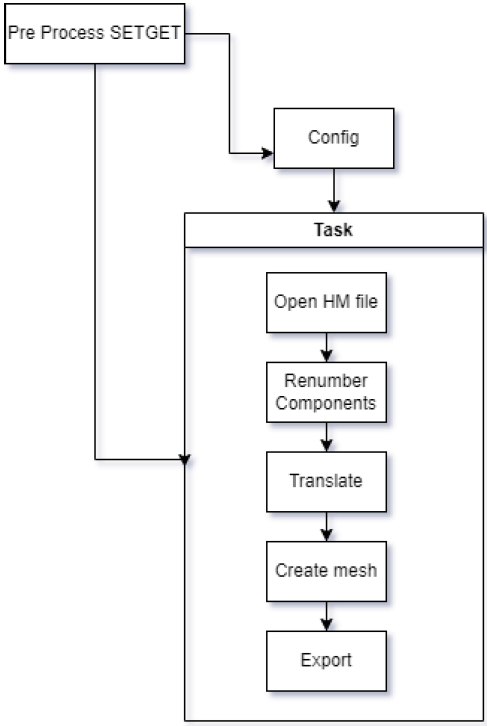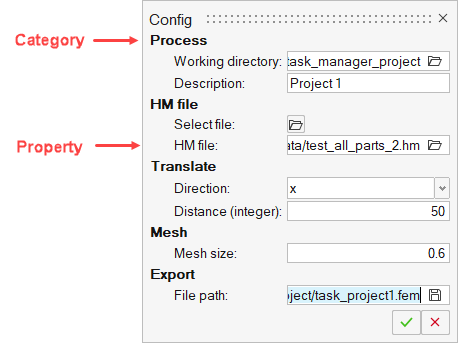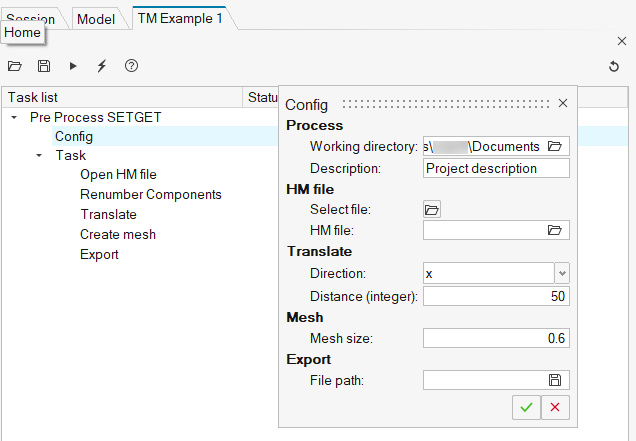Tasks
The Task Manager allows you to organize Python scripts into individual tasks and package them into a single process that you can easily follow. The tasks, their GUI, and the process structure are all defined via an XML file.
Upon loading the XML file, the Tasks Browser constructs the process tree and the dialogs for the individual tasks.
Another component of the process is the Python files that contain all callback functions that are called by the different tasks defined in the XML file. These functions can be commands that execute a specific task, commands that are applied before or after the tasks, and so on. The information defined in the XML file can be changed during run time by the Task Manager Python APIs (hw.taskmanager module). All commands can also be executed by Python APIs.
See the Task Manager topic in the API, References Guides for more information.
Task Structure
Process Item
- Process
- Task 1
- ProcessCategory1
- Task 2
- Property 1
- Property_Category 1
- Property 2
- Property 3
- Task 3
- Task 2


Toolbar
| Tool | Description |
|---|---|
| Load session |
Loads the XML file. |
| Save session |
Saves the current state of the process to an XML session file. |
| Run selected task |
Runs a specific task. |
| Run all tasks from selected task |
Runs (applies) all tasks automatically, starting from a selected task. All property values must be correctly populated in each task, otherwise the task may fail, stopping the process. |
| Launch help |
Launches an additional help file that elaborates on the sample XML file. |
| Reload |
Reloads the original session. |
Run a Task
-
From the Developer ribbon, select the Tasks tool.
Figure 3. 
If the Developer ribbon is not visible, select . -
From the Tasks Browser, click
 to load an XML file that contains tasks and their
attributes.
to load an XML file that contains tasks and their
attributes.
-
Click the first task.
A dialog is displayed, which contains the properties that are part of the Config task.
Figure 4. 
-
Click Apply,
 , to execute the task.
The task succeeds or fails.
, to execute the task.
The task succeeds or fails. -
Click
 to run the selected task.
to run the selected task.
-
Click
 to run (apply) all tasks automatically, starting
from a selected task.
Note: All property values must be correctly populated in each task, otherwise the task may fail, stopping the process.
to run (apply) all tasks automatically, starting
from a selected task.
Note: All property values must be correctly populated in each task, otherwise the task may fail, stopping the process.